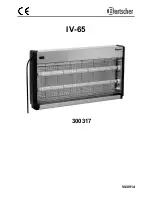
56
GNALCR - Rev. 04 - Mar/23
DANGER
• Do not attempt any makeshift repairs to the hydraulic lines, fittings or hoses by
using tape, clamps or cements. The hydraulic system operates under extremely high-
pressure. Such repairs will fall suddenly and create a hazardous and unsafe condition.
• Wear proper hand and eye protection when searching for a high-pressure hydraulic
leak.
• If injured by a concentrated high-pressure stream of hydraulic fluid, seek medical
attention immediately.
WARNING
• Carry out the operations on a carefully and controlled manner. Avoid to let the
hydraulic system working when it is not being used.
• Failure to follow these procedures may lead to fatal accidents or even death.
ATTENTION
8. Maintenance
Hydraulic safety
1. Make sure that all components in the hydraulic system are kept in good condition
and are clean.
2. Carry out the maintenance of the hydraulic parts on a clean place, free from dust
or contaminants. Otherwise, there may have malfunction or premature wear on the
equipment.
3. The correct operation and maintenance of the hydraulic system will prevent damages,
air infiltration on the system, oil and system overheating, damages to the rubber
components, etc.
4. Periodically or when the oil is replaced anormally or even when there is loss of power,
inspect the hydraulic system, fasten the connections that are leaking, replace the
hoses that are almost reaching its expiration date or if they show any cut, crack or
dryness. Regarding the hoses assembly, do it in a way that they always can flex,
without twisting or pulling it.
5. If there is any problem with the hydraulic cylinder, do not carry out any maintenance
procedure or weld heating, as both of this may cause roundness on the barrel or
other problems, consequently leading to internal leakages, lack of power, gripping,
damages to the cylinder rods, etc.
6. Before applying pressure to the system, make sure all components are tight and
that lines, hoses and coupling are not damaged.













































